Solids and Units of Volume
Table Of Contents
🎬 Math Angel Video: Solids and How to Convert Volume Units
What are Solids?
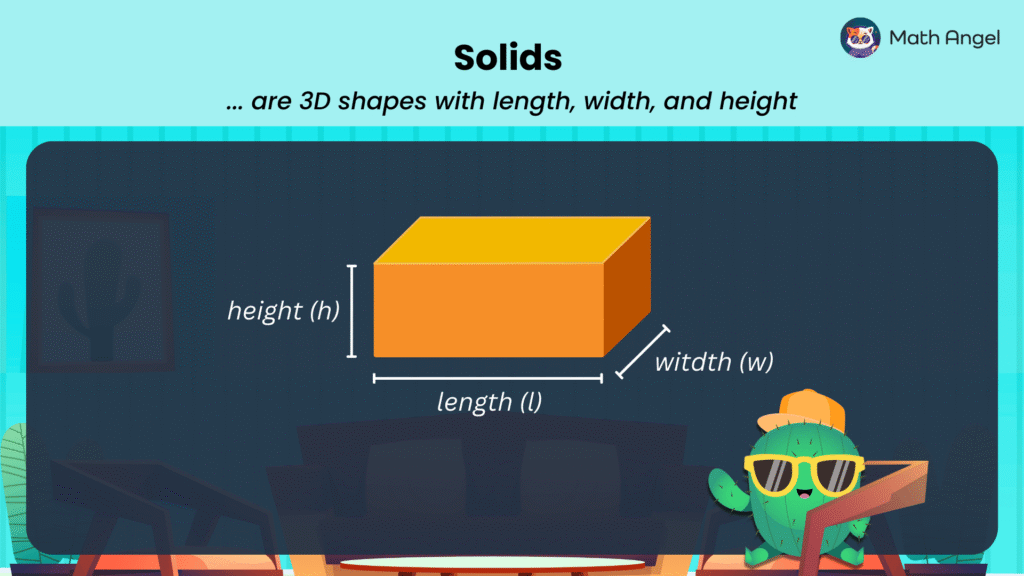
⏩️
🛎️ Solids are 3D shapes that have length, width, and height.
Length ($l$): How long the shape is.
Width ($w$): How wide the shape is.
Height ($h$): How tall the shape is.
For example, a cuboid is a solid because it has three dimensions: length, width, and height.
What Are Vertices, Edges, and Faces?
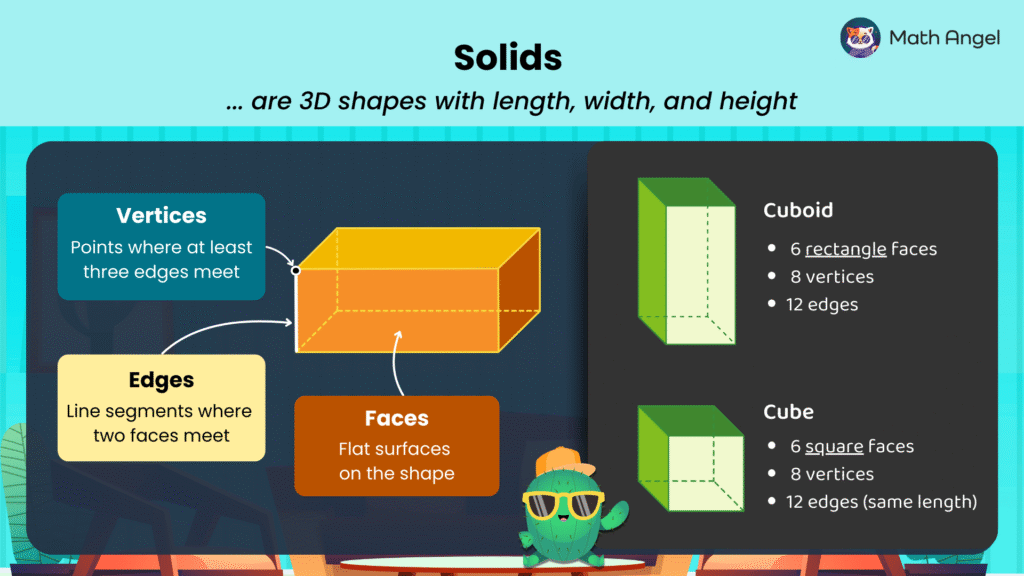
⏩️
🛎️ 3D shapes with flat surfaces have vertices, edges, and faces.
Vertices: Points where at least three edges meet.
Edges: Straight lines where two faces meet.
Faces: Flat surfaces on the shape.
Cuboid:
A cuboid is a 3D shape with six rectangular faces. It has:
- 6 rectangle faces
- 8 vertices
- 12 edges
Cube:
A cube is a special cuboid where all the faces are squares and all edges are equal. It has:
- 6 square faces (all the same size)
- 8 vertices
- 12 edges (all the same length)
What is Volume in Math?
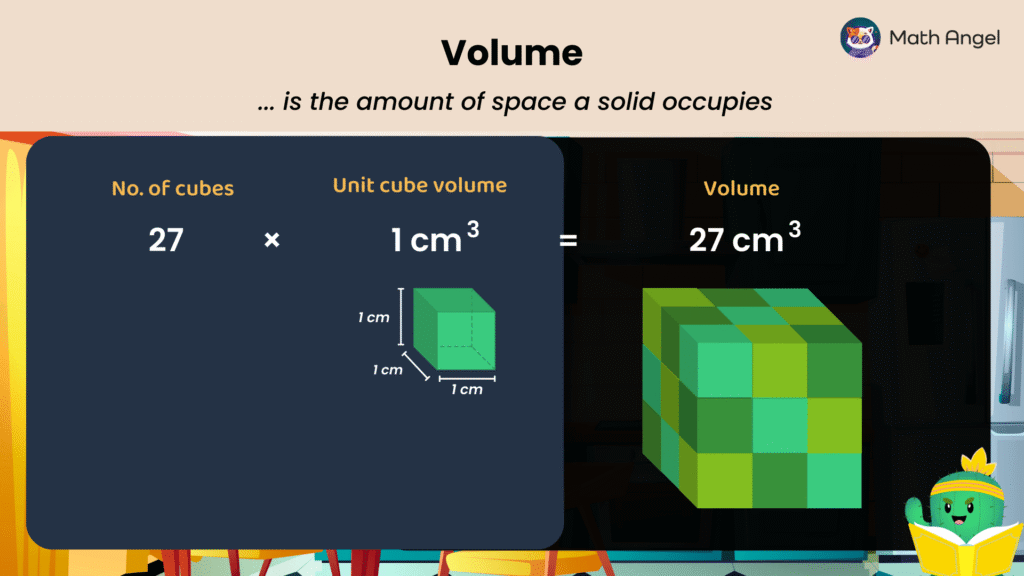
⏩️
🛎️ Definition of Volume
Volume is the amount of space a solid shape occupies.
🛎️ Units of Volume
Volume is measured in cubic units (like $\text{cm}^3$).
🛎️ Example of Volume
If a solid can hold exactly $27$ unit cubes, where each cube is $1 \text{ cm}^3$ (with $1\text{ cm}$ edge length), then the volume of the solid is $27 \text{ cm}^3$.
What Are Units of Volume?
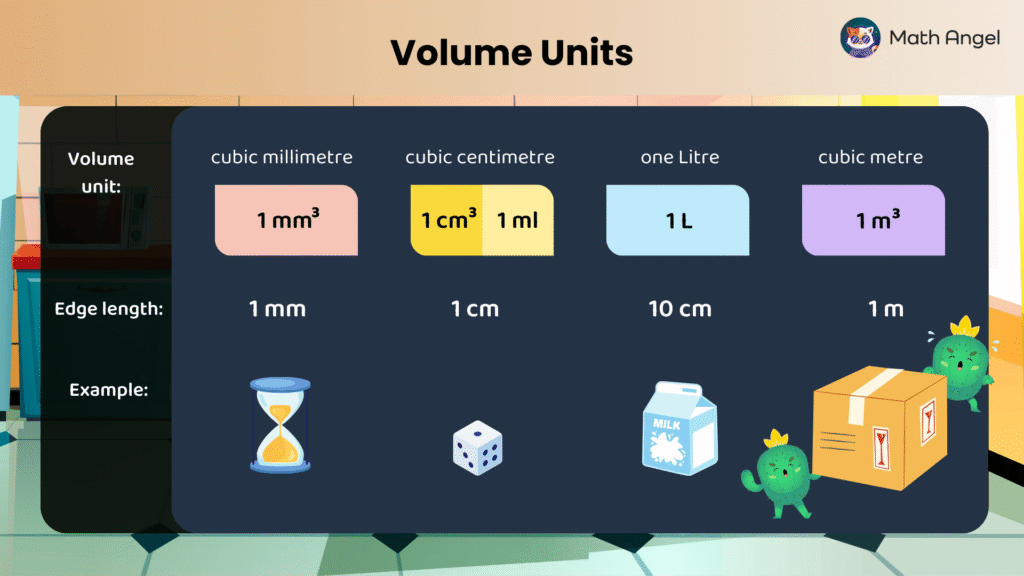
⏩️
Units of volume measure how much space something takes up.
In math, we use different units depending on the size of the object.
Cubic millimeter:
- $\textcolor{Violet}{1 \text{ mm} \times 1 \text{ mm} \times 1 \text{ mm} = 1 \text{ mm}^3}$
- $1 \text{ mm}^3$ is the space inside a cube with edge length $1 \text{ mm}$
- Example: A tiny grain of sand is about $1 \text{ mm}^3$
Cubic centimeter and milliliter:
- $\textcolor{Violet}{1 \text{ cm} \times 1 \text{ cm} \times 1 \text{ cm} = 1 \text{ cm}^3}$
- $1 \text{ cm}^3$ is the space inside a cube with edge length $1 \text{ cm}$
- Example: A sugar cube or a small dice has a volume of about $1 \text{ cm}^3$
- $1 \text{ cm}^3$ is exactly the same as $1 \text{ ml}$
- Milliliters $\text{ml}$ are often used for measuring liquids like drinks
Liter:
- $\textcolor{Violet}{10 \text{ cm} \times 10 \text{ cm} \times 10 \text{ cm} = 1000 \text{ cm}^3 = 1 \text{ L}}$
- $1 \text{ L}$ is the space inside a cube with edge length $10 \text{ cm}$
- Example: A carton of milk is usually $1 \text{ L}$
Cubic meter:
- $\textcolor{Violet}{1 \text{ m} \times 1 \text{ m} \times 1 \text{ m} = 1 \text{ m}^3}$
- $1 \text{ m}^3$ is the space inside a cube with edge length $1 \text{ m}$
- Example: A large packing box or a washing machine is about $1 \text{ m}^3$
How to Convert Between Units of Volume?
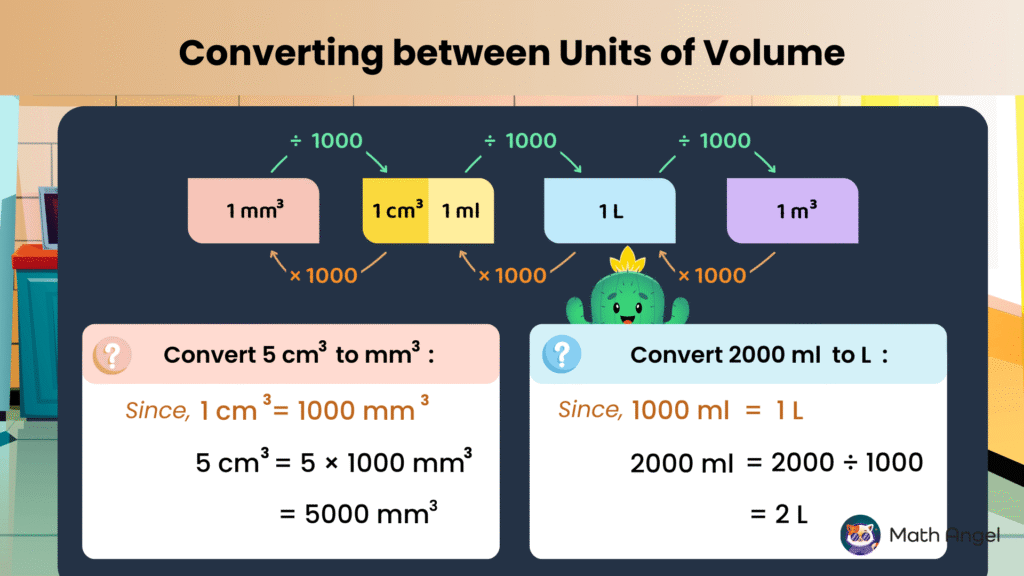
⏩️
Here’s how the main volume units are connected:
- $1 \text{ cm}^3 = 1 \text{ ml}$
- $1 \text{ L} = 1000 \text{ ml} = 1000 \text{ cm}^3$
- $1 \text{ m}^3 = 1000 \text{ L}$
To convert to a bigger unit, divide by 1000.
To convert to a smaller unit, multiply by 1000.
🛎️ Example 1: Convert $ 5 \text{ cm}^3 \text{ to} \text{ mm}^3$
- Since $1 \text{ cm}^3 = 1000 \text{ mm}^3$
- $5 \text{ cm}^3 = 5 \times 1000 \text{ mm}^3 = 5000 \text{ mm}^3$
🛎️ Example 2: Convert $ 2000 \text{ ml}^3 \text{ to} \text{ L}$
- Since $1000 \text{ ml} = 1 \text{ L}$
- $2000 \text{ ml} = 2000 \div 1000 = 2 \text{ L}$
🍪 Quiz: Practice Solids and Units of Volume
🎩 Stuck on Volume Problems? Try AI Math Solver
Need math help? Chat with our AI Math Solver at the bottom right — available 24/7 for instant answers.

